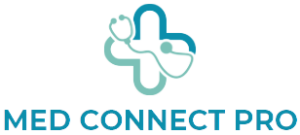In the fast-evolving landscape of design and development, on framer has emerged as a powerful tool that seamlessly bridges the gap between design and code. Built with the modern designer in mind, Framer enables the creation of interactive prototypes that not only look like the final product but also behave like one. Its intuitive interface and code-based flexibility have made Framer a go-to choice for professionals aiming to bring their digital visions to life with precision and flair.
What sets Framer apart from other prototyping tools is its dynamic approach to interaction design. Unlike static mockup tools, Framer allows designers to craft rich user experiences using animations, gestures, and real-time feedback. This level of detail makes Framer especially useful for mobile app and web designers who need to communicate nuanced ideas quickly and clearly to stakeholders, developers, or clients.
The learning curve of Framer is often praised for its balance between ease of use and powerful functionality. While beginners can jump in using the visual design interface, more advanced users can tap into JavaScript and React-based logic to create highly customized components. Framer thus supports a wide range of skill levels, making it a versatile tool for individuals and teams alike.
Collaboration is another area where Framer shines. With real-time collaboration features, teams can work together on the same prototype, much like they would in tools like Figma or Google Docs. Feedback can be integrated quickly, and changes are reflected instantly. This makes Framer not only a design tool but also a communication platform that encourages faster iteration and better end results.
Design systems are crucial in maintaining consistency across digital products, and Framer excels in supporting them. Through reusable components, shared styles, and scalable design patterns, teams can build and maintain cohesive systems effortlessly. These features help streamline the product development process, allowing designers using Framer to focus more on innovation and less on repetitive tasks.
One of the standout features of Framer is its ability to mirror prototypes directly to mobile devices. This gives designers immediate feedback on how their designs perform on real hardware, allowing for rapid testing and improvement. In this way, Framer becomes not just a design tool, but an essential part of a user-centered design workflow.
Another advantage of Framer is its responsiveness to the growing demand for no-code and low-code solutions. While it retains its developer-friendly features, Framer has also embraced a no-code philosophy, allowing users to build fully functional websites and apps without writing a single line of code. This makes Framer particularly attractive to startups, entrepreneurs, and creatives looking to prototype or launch digital products quickly.
Community and support are key pillars of the Framer ecosystem. With a thriving community of designers and developers, users have access to countless templates, components, and tutorials to accelerate their workflow. The Framer team actively engages with its user base, regularly rolling out updates based on community feedback, which ensures the platform remains current and competitive.
Performance optimization is another area where Framer excels. Unlike traditional prototyping tools that might lag with complex animations or transitions, Framer is built for speed and responsiveness. Whether you’re previewing on desktop or mobile, Framer ensures smooth interactions and quick load times, making it ideal for client presentations and usability testing.
Looking ahead, Framer is poised to play a significant role in the future of digital design. With AI integration and increasing automation features, Framer is evolving into more than just a prototyping tool—it’s becoming a full-fledged platform for building intelligent, interactive, and adaptive digital experiences. As the demand for smarter, more personalized user interfaces grows, Framer will likely remain at the forefront of design innovation.
In educational settings, Framer is also gaining traction as a teaching tool for interaction design and front-end development. Its combination of visual tools and coding capabilities makes it ideal for helping students understand the relationship between design and functionality. By learning with Framer, students gain valuable skills that are immediately applicable in the real world.
Whether you’re a solo designer, a startup founder, or part of a larger product team, Framer offers tools that adapt to your workflow. Its flexibility and depth make it an indispensable resource for those looking to craft meaningful and functional digital products. As digital experiences become more complex and user expectations rise, Framer provides a solid foundation for building the next generation of web and mobile interfaces.
In conclusion, Framer is much more than just a prototyping tool—it is a complete platform that empowers designers and developers to create, test, and iterate with unparalleled efficiency and creativity. By uniting design and code in a single environment, Framer not only enhances productivity but also inspires innovation, setting the stage for the future of interactive design.
